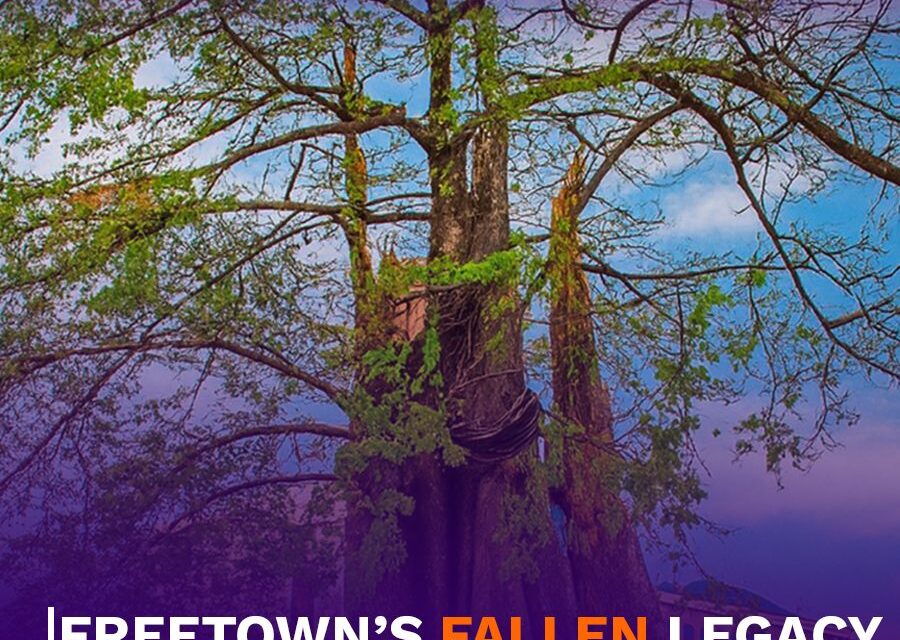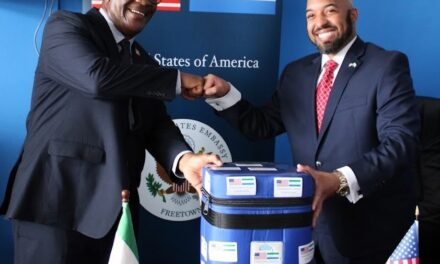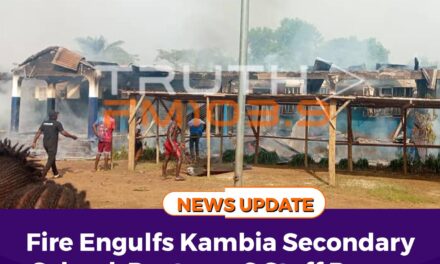By Saidu Kargbo.
Freetown, 22nd September, 2025– It has been over two years since Sierra Leone’s historic and iconic tree fell due to heavy storms on the night of May 24, 2023. Following the devastating incident at the heart of the capital, dissenting opinions and suggestions arose for what could replace and reflect the nation’s symbol. However, expectations for a regeneration of the tree seem to be dwelling with no developments in the area foreseeable, sparking numerous questions over the fate of Sierra Leone’s most cherished heritage.
Cotton Tree served as Freetown’s oldest monumental landmark since the city was established in 1787. Shortly after the incident, the government pledged to secure and preserve its remains as a cultural legacy and to house the relics in the National Museum under the supervision of the Ministry of Tourism and Cultural Affairs. The government maintained, “in order to preserve the remains of the rich cultural heritage of our beloved city, relics of the fallen cotton tree will be secured and preserved.”
On 9th December 2024, Africell, a telecommunication company in Sierra Leone, in partnership with the Ministry of Tourism and Cultural Affairs, enlisted the expertise of a globally renowned botanical research institution, Royal Botanic Gardens Kew (RBG Kew) in order to assess the tree’s condition and propose stabilization and potential regrowth strategies to conserve the historic Freetown Cotton Tree. Yet, the site remains largely untouched beyond basic clean-up, sparking concerns among heritage activists. As it stands, there is a lack of certainty as to what is next.
According to the Chairman of Monuments and Relics Commission, the institution responsible for ensuring the preservation, protection, and promotion of Sierra Leone’s cultural heritage assets, Joseph Ben Keifala Esq., “The institution does not have any adequate information regarding the cotton tree.” He reiterated that the Ministry of Tourism would be in a better position to tell where the remains have been placed. However, the Public Relations Officer at the Ministry of Tourism and Cultural Affairs, Alieu Kondoh, in an interview with Truth Newspaper, confirmed that the remains of the Cotton Tree had been given to Africell in order to carve artistic sculptures which could be displayed at the National Museum.
With expert evaluation that occurred in late 2024, and a formal report detailing the findings and recommendations expected early this year, nothing substantial has come out of it. “The history of Freetown will be unwritten in its entirety without making mention of the symbolic nature of the Cotton Tree.” Says Abubakarr Kamara, PRO Freetown City Council.
As Freetown grapples with rapid urbanization, climate risks, and questions of identity, the Cotton Tree’s uncertain future stands as a metaphor for Sierra Leone’s own search for balance between heritage and modernity. Whether through regeneration, museum preservation, or a new civic monument, what’s clear is that the Cotton Tree must not be forgotten.
Beyond heritage, the Cotton Tree carries deep spiritual meaning. For decades, traditional worshippers left offerings at its base, while Christians and Muslims alike acknowledged its place as a silent witness to Sierra Leone’s history. The future of the Cotton Tree remains uncertain, and the hope for its regeneration remains stalled.









